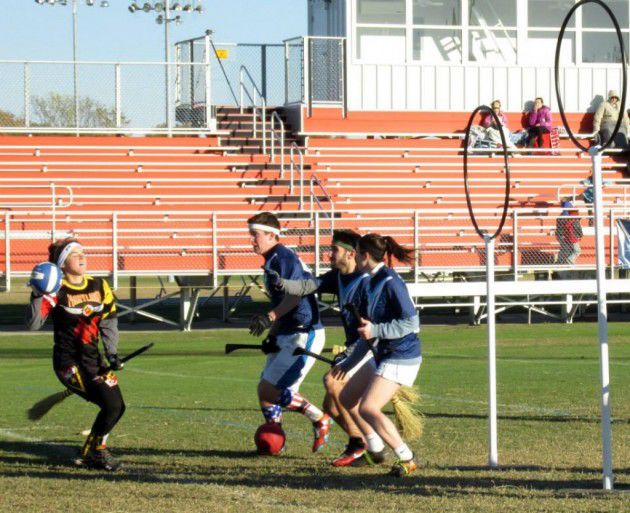Quidditch seeks and keeps popularity on college campuses
March 26, 2015
 Most people do not expect that one of the fastest growing sports on college campuses involves volleyballs…and dodgeballs…and broomsticks. Quidditch has become a staple at universities around the nation with a lot of help from the United States Quidditch.
Most people do not expect that one of the fastest growing sports on college campuses involves volleyballs…and dodgeballs…and broomsticks. Quidditch has become a staple at universities around the nation with a lot of help from the United States Quidditch.
US Quidditch is a nonprofit established in 2010 that serves over 200 teams, 4,000 athletes and sponsors nine major tournaments annually, the largest of which is the Quidditch World Cup. This year’s World Cup will take place from April 11-12 in Rock Hill, South Carolina. Over 80 teams will be competing with 1,600 athletes and a spectator count that is expected to be in the thousands.
The sport was originally created by Xander Marshal, a student at Middlebury College. He took the basic rules of the game described in the Harry Potter franchise and turned quaffles into volleyballs, bludgers into dodgeballs and the game of quidditch was born. USQ describes the current game as a mixture of “rugby, dodgeball and tag” and, of course, all athletes play with a broomstick between their legs.
So how did the sport get so big? Nick Candido, the Public Relations Team Leader for USQ, thinks that quidditch definitely got a helping hand from the Harry Potter fandom. “We had a guaranteed fan base of potential athletes and spectators that most rising sports have to construct from the ground up,” Candido said. “But I am pleased to say that we’ve really come into our own.”
Candido also believes the popularity of quidditch can partially be explained because it is like no other intramural sport offered on a college campus. “We have a full contact, co-ed experience,” Candido said. “Everyone from the smallest, shy nerd to the largest quarterback, this sport has something for everyone, even at its most competitive levels.”
This sense of acceptance and community seems to be what USQ emphasizes the most about their sport. According to their website, the organization rests on the pillars of the three C’s: competition, community and creativity.
Those three values and that positive atmosphere can be found on Villanova’s quidditch team.
Adam Vincent, a chaser for Villanova Quidditch, said he was initially drawn to join the team because of the obvious “camaraderie” between players. While it is still a competitive atmosphere, Vincent said that the members of the team are always friendly and supportive of each other. “Sure, we get frustrated with a player or the calls being made,” Vincent said, “but at the end of the day, everyone recognizes we’re all sharing this ridiculous sport.”
Vincent also said he was drawn to quidditch for another reason: the sport’s progressive treatment of gender. US Quidditch has an initiative called Title 9 and 3/4 to promote a sport “that is truly free of gender-based restrictions, rather than evenly segregated between men and women (as it currently exists under Title IX).”
To do this, USQ has instated a four-maximum rule that states each team can have a maximum of four people who identify as the same gender, excluding the seeker. The organization is also very clear about being open to transgendered players or those who do not identify with the gender binary system. This encourages diversity and inclusion in the growing sport.
Quidditch might seem like a passing fad on college campuses. But the sport’s encouragement of community, inclusiveness and gender equality give it staying power. Candido summarized these key benefits of quidditch when he said, “It is so open and so accepting of all people, and you don’t find that in any other sport. You’re regularly coordinating with folks all proud to run around with a broom between their legs. You don’t get that anywhere else.”


